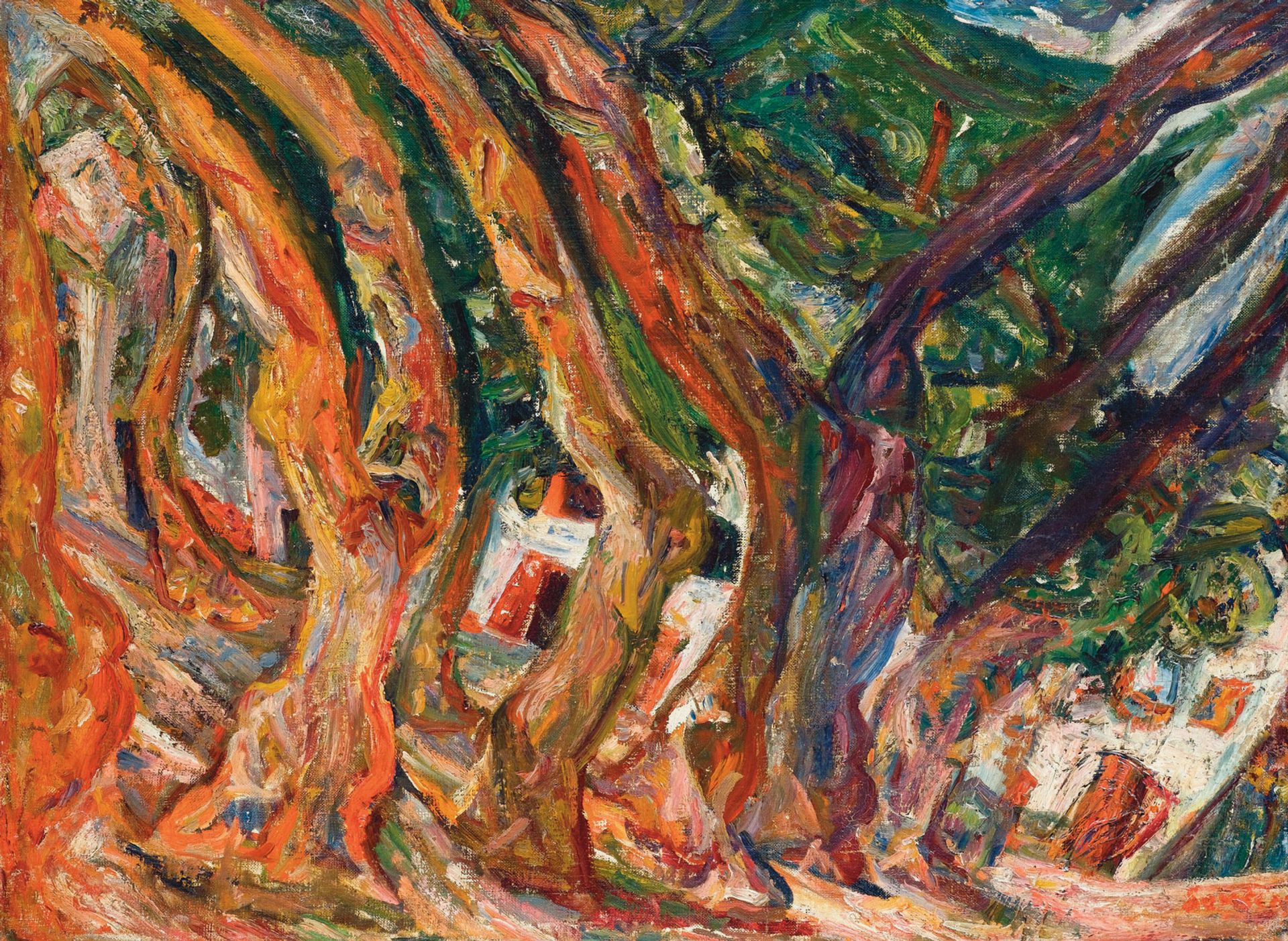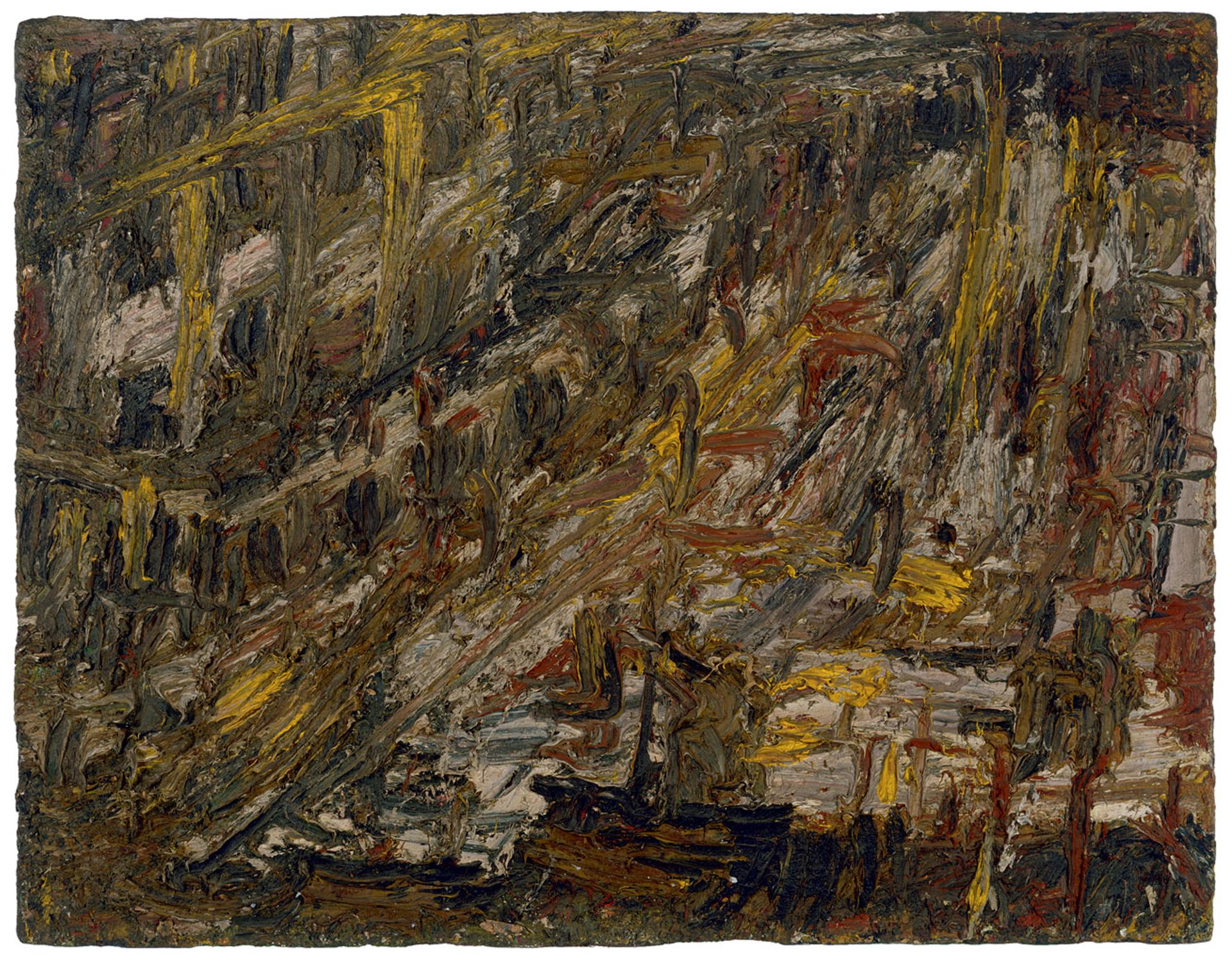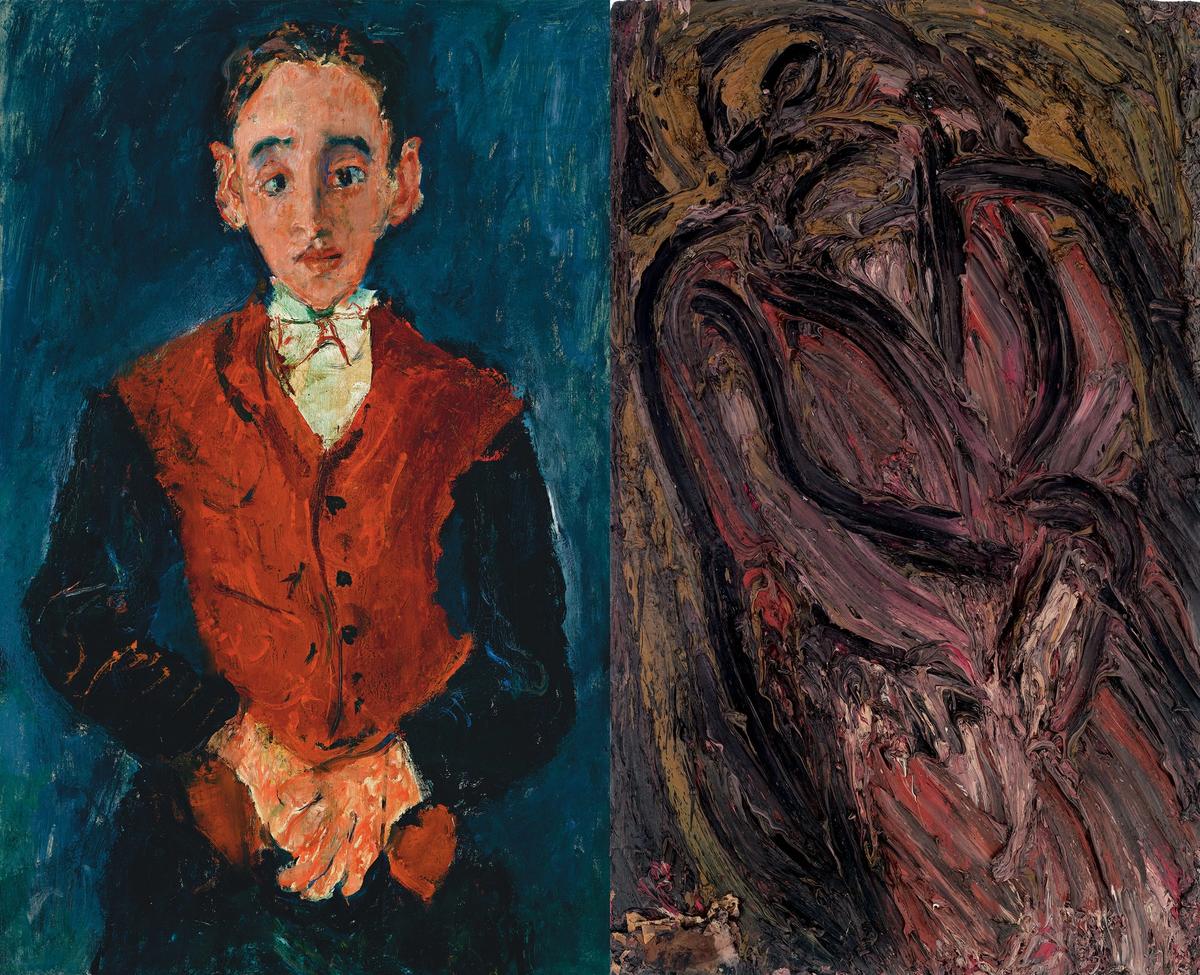The Belarus-born, France-based painter Chaïm Soutine (1893-1943) is precisely the kind of figure we now associate with the School of Paris. Less of a formal movement than an informal time span, it was marked by cosmopolitanism, with Modernist-minded artists from around the world flocking to the French capital, in the first half of the 20th century, to innovate, hang around, work in obscurity, and wait for genius to emerge and fame to pounce.
Rising from near destitution to art stardom, Soutine—an Expressionist in all but name, and a product, like Marc Chagall, of Tsarist-era Jewish life—died from the effects of a bleeding ulcer, aged 50, during the Nazi occupation of France. But he had an immediate afterlife in the 1950s, when he became a presiding influence for that other loose, decades-long, vaguely cosmopolitan movement, the School of London. Its members, from Francis Bacon to Frank Auerbach, found inspiration in Soutine’s impasto beef carcasses and feverish landscapes.
In Soutine | Kossoff, Hastings Contemporary assembles Soutine landscapes and portraits along with similar works by leading School of London painter Leon Kossoff (1926-2019).

Chaim Soutine's Les Platanes a Ceret (around 1920) Collection Diethard Leopold. Image courtesy of Sotheby's
Soutine had an artistic breakthrough just after the First World War, when he created dozens of landscapes in the foothills of the Pyrenees, in a town called Céret. Featuring around 20 paintings by each artist, the exhibition will include key works from Soutine’s Céret years, such as Les platanes à Céret (around 1920)—a “vibrant, fleshy, anarchic” painting, says the curator James Russell, which seems to have been created “without plan or pattern”.
The show, which rigorously separates the two artists in otherwise flowing galleries, implicitly compares the Céret works with Kossoff’s post-war cityscapes, such as the expressive, yellow-brown blur of City Building Site (1961). Kossoff—like his friend and fellow Soutine acolyte, Auerbach—viewed the ruins and construction sites of post-war London as a kind of dynamic visual wonderland, and that painting, showing a bombed area nominally coming back to life, imbues its array of steel girders with a Soutine-like spontaneity.

Leon Kossoff's City Building Site (1961) © Leon Kossoff Estate
Both famously shared a love of Rembrandt, making paintings inspired by his work
There is a sense of near-formal continuity between the two artists, suggests Russell, who points out that Kossoff owned the Soutine catalogue raisonné. And they both famously shared a love of Rembrandt, with each making paintings inspired by his work. But unlike the Dutch master, “both were uninterested in recording light”, Russell says. Rather, he argues, each wanted to let their paint colours themselves seem to be a source of light.
This inherent artificiality is most apparent in their portraits. In Le valet de chambre (around 1927), Soutine uses “drips and splashes of colour,” Russell says, to lend texture to the servant’s very distinctive velvety sleeves. And Russell regards the figure’s near-abstract hands as approaching Kossoff’s own near-break with figuration. Kossoff produced many depictions of the writer N.M. Seedo, in works such as Head of Seedo (1964). When asked what would happen if the curator had directly paired Soutine’s baffled-faced, 2ft-tall valet with the 5ft, near-faceless portrait of Seedo, Seated Woman (1957), Russell replies: the works “would fight with each other”.
• Soutine | Kossoff, Hastings Contemporary, 1 April-24 September


